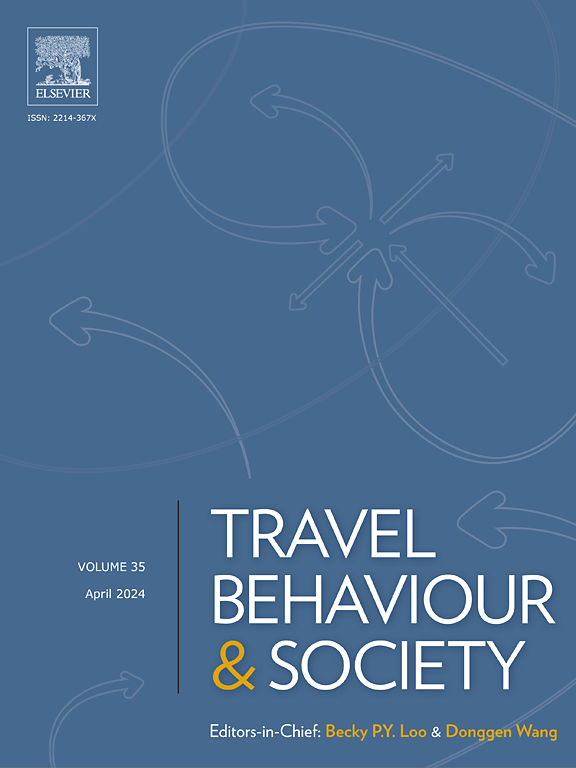一个集成的risa -机器学习框架,通过铁路设施的质量评估和优先排序来提高用户满意度
IF 5.7
2区 工程技术
Q1 TRANSPORTATION
引用次数: 0
摘要
私人车辆使用量的增加和由此产生的负面外部性要求对新兴国家的服务质量进行定期评估和改善公共交通。目前的工作引入了一种新颖的集成RISA-ML(修订重要性满意度分析-机器学习)框架,根据改进的需要对火车站和车站设施进行优先排序。虽然使用RISA对车站设施进行优先排序,但根据基于ML技术建模的服务水平(LOS)对车站进行优先排序。该方法以印度铁路公司旗下的六个火车站为例,将严格的数据驱动方法与先进的机器学习技术相结合。该研究确定了关键干预领域,在大多数情况下,超过50%的设施需要立即关注。数字信息系统和为不同残疾乘客提供的基础设施等设施被强调为优先事项。调查结果显示,首都城市的车站,如特里凡得琅,表现出最高的缺陷,而安全、保障和支线系统是所有车站的关键问题。提出了用于LOS模型开发的标准化数据收集模板,以确保跨不同上下文的适用性。虽然应用了各种机器学习模型,如支持向量回归、随机森林和极端梯度增强(XGBoost),并进行了严格的训练,但人工神经网络(ANN)成为最适合的LOS模型。基于人工神经网络的特征重要性揭示了数字板、Wi-Fi和无障碍设施对LOS的显著影响。所提出的方法为系统的基础设施改进提供了可操作的见解,并提供了可扩展的解决方案,不仅在铁路网络中,而且在其他环境中提高乘客满意度。本文章由计算机程序翻译,如有差异,请以英文原文为准。
An integrated RISA-machine learning framework to enhance user satisfaction through quality assessment and prioritization of railway facilities
The rise in private vehicle usage and resulting negative externalities calls for periodic service quality assessment and improvement of public transport in emerging countries. The present work introduces a novel, integrated RISA-ML (Revised Importance Satisfaction Analysis- Machine Learning) framework to prioritize railway stations and station facilities based on the need for improvement. While station facilities are prioritized using RISA, stations are prioritized based on the Level of Service (LOS) modelled based on ML techniques. The methodology, demonstrated with reference to six railway stations under Indian Railways, combines rigorous data-driven approaches with advanced machine learning techniques. The study identified critical intervention areas, with more than 50% of the facilities in most cases requiring immediate attention. Facilities such as digital information systems and infrastructure for differently abled passengers were emphasized as top priorities. Findings revealed that stations in capital cities, like Trivandrum, exhibited the highest deficiencies, while safety, security, and feeder systems were critical concerns across all stations. A standardized data collection template for LOS model development is presented, ensuring applicability across diverse contexts. Although various Machine learning models viz., Support Vector Regression, Random Forest, and eXtreme Gradient Boost (XGBoost) were applied and rigorously trained, Artificial Neural Network (ANN) emerged as the best fitting LOS model. ANN based feature importance revealed the prominent influence of digital boards, Wi-Fi, and accessibility facilities on LOS. The presented methodology provides actionable insights for systematic infrastructure improvement and offers a scalable solution to enhance passenger satisfaction not only in railway networks but also in other contexts.
求助全文
通过发布文献求助,成功后即可免费获取论文全文。
去求助
来源期刊

Travel Behaviour and Society
TRANSPORTATION-
CiteScore
9.80
自引率
7.70%
发文量
109
期刊介绍:
Travel Behaviour and Society is an interdisciplinary journal publishing high-quality original papers which report leading edge research in theories, methodologies and applications concerning transportation issues and challenges which involve the social and spatial dimensions. In particular, it provides a discussion forum for major research in travel behaviour, transportation infrastructure, transportation and environmental issues, mobility and social sustainability, transportation geographic information systems (TGIS), transportation and quality of life, transportation data collection and analysis, etc.
 求助内容:
求助内容: 应助结果提醒方式:
应助结果提醒方式:


